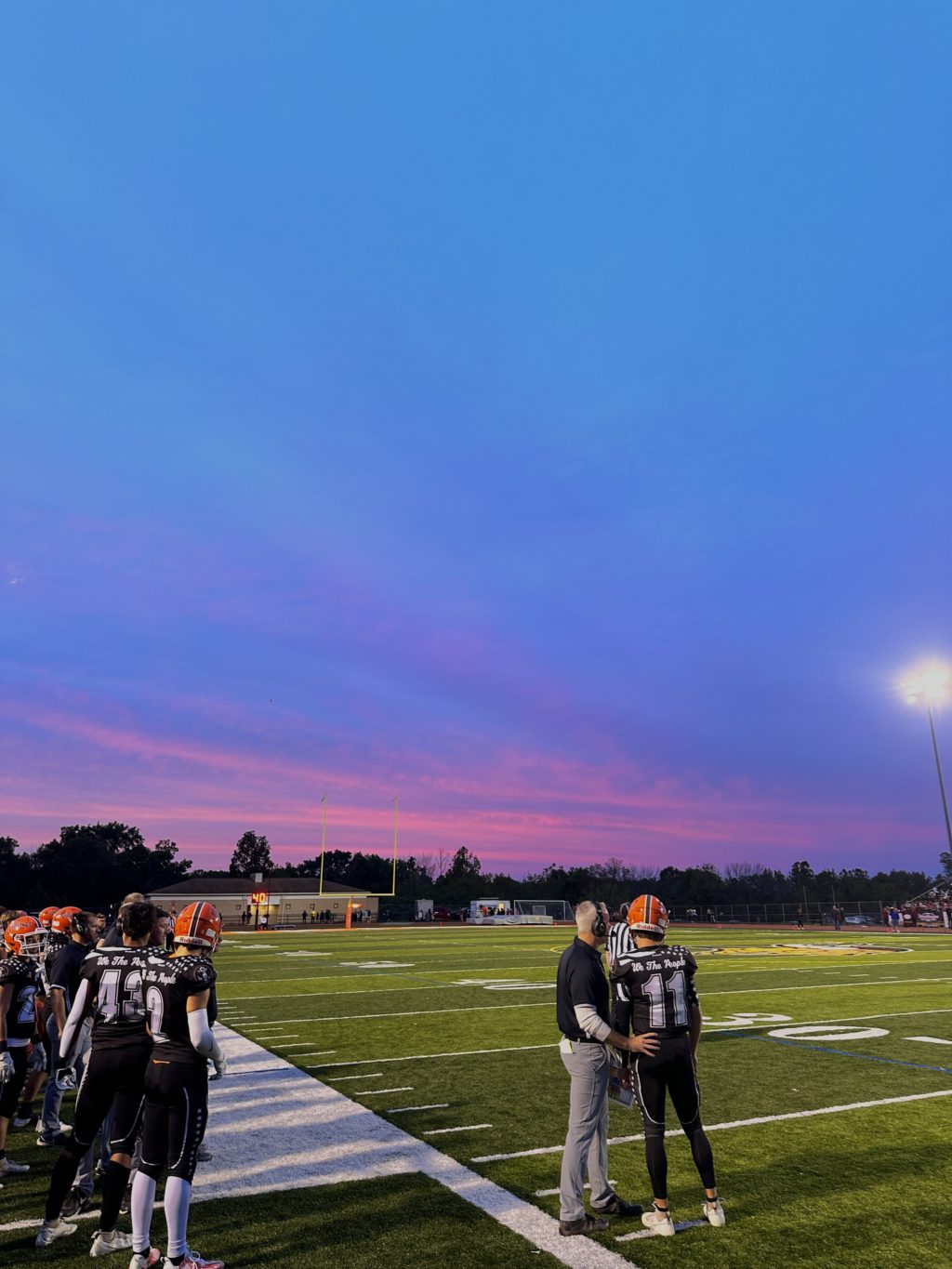Less than four minutes into the New York Jets’ opening game against the Buffalo Bills, Aaron Rodgers’ debut was halted by a season-ending injury. Only 48 hours after Rodgers tore his Achilles tendon, the National Football League Players Association, or the NFLPA, released a statement demanding for the return of grass fields. This is a battle that the NFLPA and players have been fighting for years, and the problems associated with artificial turf have come to PV’s doorstep. It is time Perkiomen Valley starts asking the question: is artificial turf the safest option?
For years since the invention of artificial turf, it has been heralded as a magical solution to all of the problems that arise from grass. No mowing, watering, pesticides or fertilizers are needed for the revolutionary new surface. For PV, the best trait of artificial turf is its low maintenance.
“It gives you the ability to play games and not really have to worry about weather,” Robert Felty, the school’s athletic director said. However, under this seemingly perfect facade, there are a multitude of emerging complications.
Many athletes are speaking out about their preference for natural grass. “AstroTurf? That stuff was the worst thing ever invented, ” Seth Joyner, former Philadelphia Eagle linebacker said. The hatred for artificial turf stems from the harsh effect it has on athletes’ bodies. Players have stated that artificial turf is distinctly harder on their joints compared to grass and allows for more frequent and serious injuries. According to the American Journal of Sports Medicine, injury rates on artificial turf are proven to be statistically significant. Through data collected from NFL regular season games between 2012 and 2018, there was a 28% increase in lower extremity injuries, a 69% increase in foot and ankle injuries, and a 32% increase in knee injuries on artificial turf. There is clear evidence that artificial turf results in an influx of injuries, which is a notable matter when an injury could be career-ending or hurt a young athlete’s body.
A new discovery about the composition of artificial turf has also emerged. PFAS, or per-and polyfluoroalkyl substances, are the main material used for the infill of the artificial turf. These pellets may be small in size but have large consequences. The pellets are able to inflict their toxic effects through fumes, ingestion, skin contact, and contamination caused by surface and groundwater leaching. Data is limited because of the relatively new nature of PFAS but, according to the EPA, they have been proven to cause reproductive effects in pregnant women, developmental effects in children, increased risk of some cancers, reduced ability of the body’s immune system to fight infections, interference with the body’s natural hormones and increased cholesterol levels and/or risk of obesity. These chemicals already have a local death toll. In an investigation conducted by the Philadelphia Inquirer, sixteen different types of PFAS were found in Veterans Stadium, which has been linked to six former Philadelphia Phillies’ glioblastoma-related deaths. For PV students who spend most of their outside school hours on artificial fields, these side effects present a serious issue.
However, a solution is not just as simple as ripping out the artificial turf. Many students enjoy the fast-paced game that synthetic grass allows and the ability to play more games due to fewer weather restrictions. But there is an inequality on PV’s campus. Some teams, like girls soccer, practice mainly on grass but play most games on artificial turf. “If we practice on the grass field, which is slow-moving and much smaller, and then play games on turf, which is bigger and faster, it’s possible to be thrown off in our playing style, because we’re not used to the turf when we’re doing drills or practicing formations,” Matilda Fisher, an outside defender on the girls soccer team, said. “Also, many of our opponents in the PAC have turf practice fields, which can put us at a disadvantage.” Most athletes agree that well-maintained grass is superior to artificial turf, but artificial turf is better than poor grass. In PV’s past, the grass had drainage and maintenance issues which had led to game cancellations. These struggles are what likely contributed to PV’s $3.9 million project to install turf fields at the high school football stadium and varsity baseball field.
While the artificial turf fields have served PV for years, it is time to reevaluate its presence. It is vital that PV acts hastily and tests all the artificial turf fields for PFAS. While this may be costly, there is no price too large to ensure the safety of students and the community. If PFAS are found, this information, and the injury rates brought upon by turf, should be taken into account. A community discussion on the next steps for the school must be had. While PV’s sports are not a billion-dollar business like the NFL, the athletes deserve the best treatment nonetheless.
